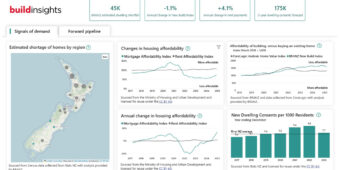Wages up, workers worse off?
28 Feb 2022, Industry News, News

Average ordinary time hourly earnings in the construction industry rose 3.2% in the year to the December 2021 quarter, but workers may not be feeling the benefit
Stats NZ reported that tradies’ income has been on the up for four consecutive quarters when compared to the previous year. The year to March 2021 quarter (1.8%), the year to June 2021 (3.1%), the year to September 2021 quarter (3%) and the year to December 2021 (3.2%) all experienced increases.
The electricity, gas, water and waste services industry experienced the sharpest increase for the year to December 2021 quarter (8%), while employees within the textile, leather, clothing and footwear manufacturing received a 5.1% bump in their pay packet.
“Businesses surveyed in the labour cost index (LCI) continued to raise wages in industries such as construction, and this is something we’ve seen flow into our most recent consumer price index (CPI) numbers,” Business Employment Insights Manager Sue Chapman said.
Furthermore, the Ministry of Business, Innovation and Employment’s Building and Construction Sector Trends Annual Report 2021, published in August 2021, showed an increase in the average hourly rate from $30.79 in the year ending June 2019 to $32.09 in the year ending June 2021.
Not all rosy
Despite the increase, this is still less than average hourly earnings across the private sector of $33.77 for the quarter ending December 2021.
Additionally, construction workers are unlikely to feel the benefit of increased wages as the annual cost of living was 5.2% higher for the average household in the December 2021 quarter than the December 2020 quarter.
Higher petrol prices were one of the chief causes of the high inflation, added Consumer Prices Manager Katrina Dewbery.
“Higher petrol prices have impacted middle-spending households more as they typically spend a larger proportion of their expenditure on petrol.”
In fact, the consumer price index (a tool used to estimate the average variation in the prices of products consumed by households between two given periods) recorded its largest increase since the series began in 2008 for seven out of 13 household groups. When compared with the December 2020 quarter, every household group in the December 2021 quarter experienced an increase in the costs of living between 4.8% to 5.4%.
Register to earn LBP Points Sign in



